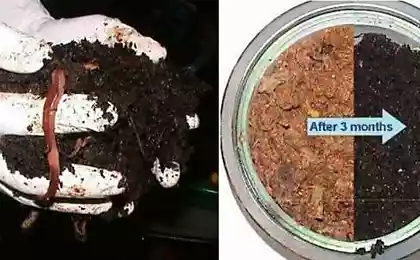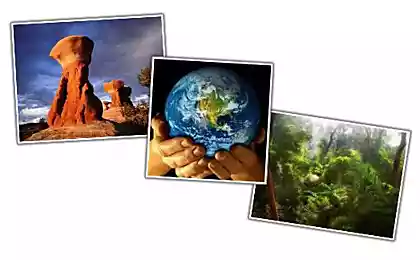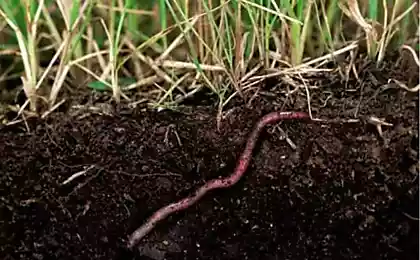473
Ancient worms helped to improve earthly life
The worms that lived in the seas at the beginning of the Cambrian period, their participation in geochemical processes helped to maintain the level of oxygen at that level which was necessary for the development of other forms of life.

At the beginning of the Cambrian period (which is about 570-540 million years ago) the Earth was a sudden increase in biodiversity. In a short time there are many organisms for which it is not always possible to find ancestors in an earlier era; in the Cambrian appear echinoderms, molluscs, arthropods, chordates. On the causes of the Cambrian explosion, biologists are wondering still, but one of the most popular hypotheses is that new complex organisms got the opportunity to develop due to the "oxygen catastrophe" – a strong increase in the concentration of oxygen in the atmosphere that occurred due to the activity of photosynthetic cyanobacteria.
However, in order to "life is normal", oxygen was supposed to be at a proper level. Whether its too low, it would simply be not enough for the needs of developing organisms, and if it was too much, he would cause oxidative stress in cells, which learned to use oxygen for energy production, but have not yet learned to cope with his excess. In addition, too high a level of oxygen in the atmosphere simply would threaten frequent fires. It can be assumed that there was a regulator that prevents sharp changes in oxygen in the atmosphere.
According to Richard Boyle (Richard Boyle) from the University of southern Denmark, such a regulator could be worms bottom ocean, who lived in the early Cambrian period. Sizes they can be the most different, up to 40 cm in length, their job was to literally plow the seabed. Making moves in the bottom sedimentary layers and srygley them, they provided access to oxygen-rich seawater to the bacteria living in the sludge.
Getting access to oxygen, bacteria began to actively stocking phosphates (compounds of phosphorus acids), necessary for any living organism. Phosphates accumulate in the sediments, they became smaller in most sea water. And it has a bad effect on photosynthetic organisms, which could not grow and multiply without phosphorus compounds. That is, the intensity of photosynthesis, and the oxygen level decreased. Receives a negative feedback: the more oxygen in seawater, the less it is necessary for living organisms, the phosphate and the less the oxygen. But worked such negative feedback due to benthic worms (not only, however, worms, and any benthic organisms that dig into the seabed). As a result, the level of oxygen could not reach dangerous levels that are too high.
But did oxygen levels due to the same worms to fall too low? In this case the lack of it directly affect the lives of benthic animals, which could not so actively dig the bottom – they simply would be less due to unfavorable environmental conditions. And then the level of oxygen in the water would go up, as photosynthesizing algae again would have received a sufficient amount of phosphorus.
In an article in Nature Geoscience, Richard Boyle and his colleagues from Britain, China and Germany describe in detail a model of the geochemical cycles, based on the benthic animals. In itself it may explain why in those ancient times the oxygen level was as necessary. However, this does not mean that benthic worms was the only one who, so to speak, was holding the fate of the world – there could be other regulators, and researchers have yet to figure out which ones were bottom feeders.
Source: nkj.ru

At the beginning of the Cambrian period (which is about 570-540 million years ago) the Earth was a sudden increase in biodiversity. In a short time there are many organisms for which it is not always possible to find ancestors in an earlier era; in the Cambrian appear echinoderms, molluscs, arthropods, chordates. On the causes of the Cambrian explosion, biologists are wondering still, but one of the most popular hypotheses is that new complex organisms got the opportunity to develop due to the "oxygen catastrophe" – a strong increase in the concentration of oxygen in the atmosphere that occurred due to the activity of photosynthetic cyanobacteria.
However, in order to "life is normal", oxygen was supposed to be at a proper level. Whether its too low, it would simply be not enough for the needs of developing organisms, and if it was too much, he would cause oxidative stress in cells, which learned to use oxygen for energy production, but have not yet learned to cope with his excess. In addition, too high a level of oxygen in the atmosphere simply would threaten frequent fires. It can be assumed that there was a regulator that prevents sharp changes in oxygen in the atmosphere.
According to Richard Boyle (Richard Boyle) from the University of southern Denmark, such a regulator could be worms bottom ocean, who lived in the early Cambrian period. Sizes they can be the most different, up to 40 cm in length, their job was to literally plow the seabed. Making moves in the bottom sedimentary layers and srygley them, they provided access to oxygen-rich seawater to the bacteria living in the sludge.
Getting access to oxygen, bacteria began to actively stocking phosphates (compounds of phosphorus acids), necessary for any living organism. Phosphates accumulate in the sediments, they became smaller in most sea water. And it has a bad effect on photosynthetic organisms, which could not grow and multiply without phosphorus compounds. That is, the intensity of photosynthesis, and the oxygen level decreased. Receives a negative feedback: the more oxygen in seawater, the less it is necessary for living organisms, the phosphate and the less the oxygen. But worked such negative feedback due to benthic worms (not only, however, worms, and any benthic organisms that dig into the seabed). As a result, the level of oxygen could not reach dangerous levels that are too high.
But did oxygen levels due to the same worms to fall too low? In this case the lack of it directly affect the lives of benthic animals, which could not so actively dig the bottom – they simply would be less due to unfavorable environmental conditions. And then the level of oxygen in the water would go up, as photosynthesizing algae again would have received a sufficient amount of phosphorus.
In an article in Nature Geoscience, Richard Boyle and his colleagues from Britain, China and Germany describe in detail a model of the geochemical cycles, based on the benthic animals. In itself it may explain why in those ancient times the oxygen level was as necessary. However, this does not mean that benthic worms was the only one who, so to speak, was holding the fate of the world – there could be other regulators, and researchers have yet to figure out which ones were bottom feeders.
Source: nkj.ru























